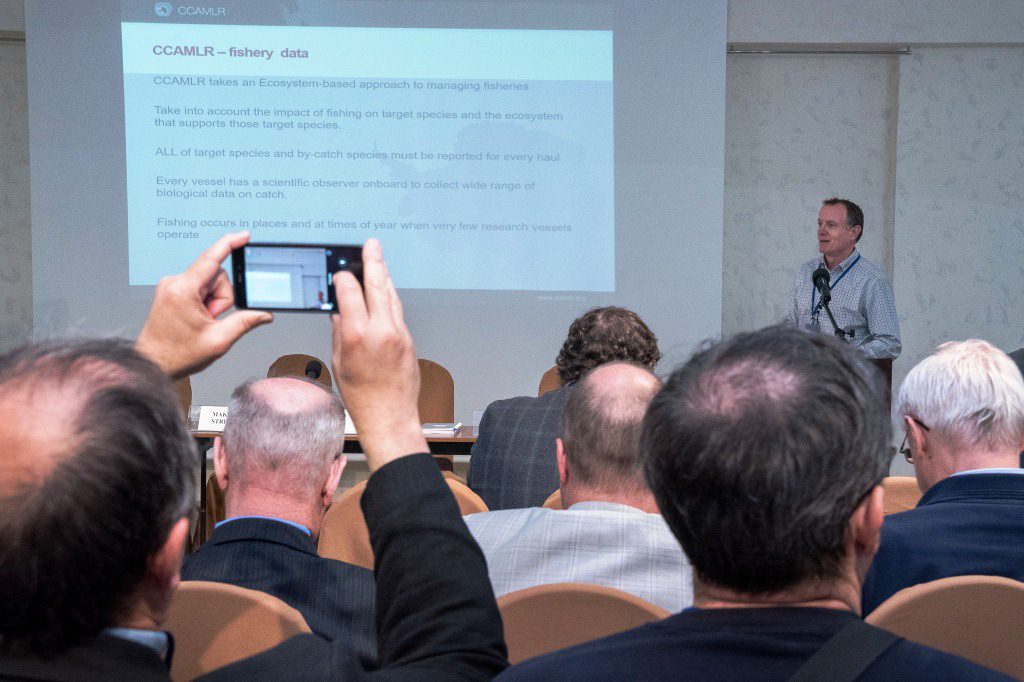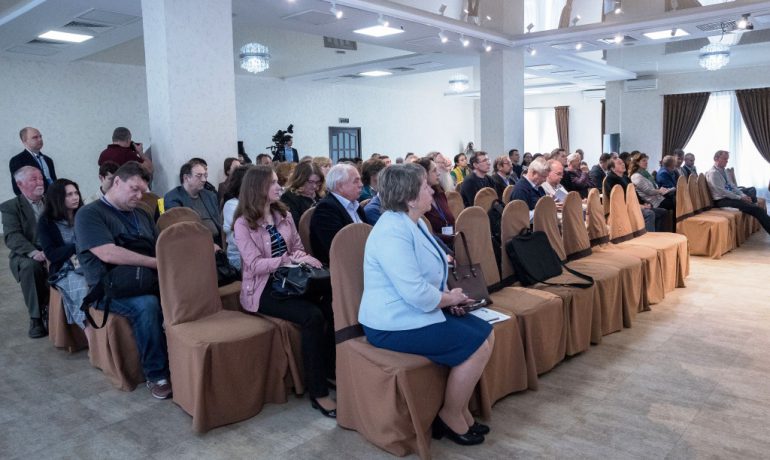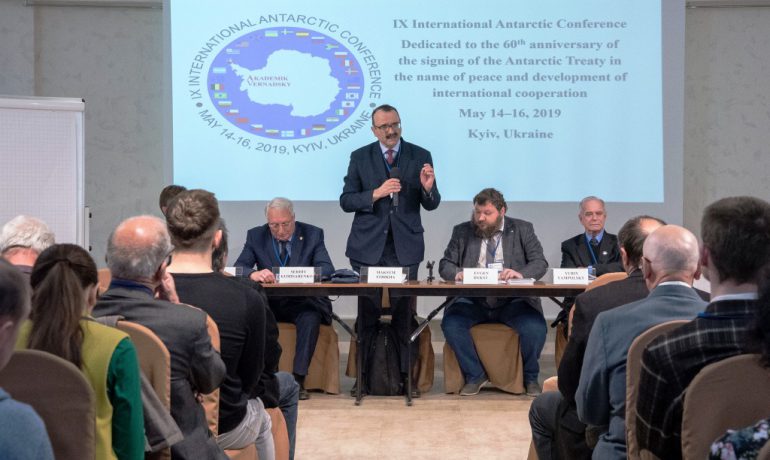The results of Antarctic research carried out in the scientific institutions of Ukraine and leading laboratories of scientific centers of sixteen countries of the world were presented at the IX International Antarctic Conference, which was held 14-16 May, 2019 in Kyiv. The prestigious scientific forum organized by the Ministry of Education and Science, the National Academy of Sciences of Ukraine, the State Institution National Antarctic Scientific Center of the Ministry of Education and Science of Ukraine, was attended by 130 scientists from Ukraine, Germany, Poland, Turkey, Latvia, Belarus, and representatives of the Secretariat of the Commission for the Conservation of Antarctic Marine Living Resources (CCAMLR). On the eve of the Conference the Organizing Committee had received 109 abstracts from 252 authors.

For three days, the participants of the IX IAC had worked in the format of plenary and sectional sessions in the areas of Life sciences, Geosciences and Physical Sciences.
During the conference, which was not accidentally devoted to the 60th anniversary of the signing of the Antarctic Treaty (to which Ukraine joined in 1992), it was emphasized that the Treaty remains a fundamental document in defining the international legal regime for the preservation of the region as a planetary nature reserve, the territory of peace and scientific cooperation.
During the conference, Ukrainian Antarctic research was discussed in detail. Participants of IX IAC agreed that over the past two years the international cooperation of Ukrainian scientists has expediently expanded, and considering that a significant amount of research is interdisciplinary (meteorology, hydrology, physics, chemistry, biology, geology, geophysics), this encourages joint integrated research in these areas, taking into account the trends of international Antarctic research presented in recent SCAR materials.

The conference participants noted that the quantity and quality of scientific data obtained at the Antarctic Akademik Vernadsky Station had noticeably increased; the station modernization was carried out – it is equipped with new equipment and modern technologies are introduced. In particular, instead the outdated IPS-42 ionosphere vertical sounding station, a new digital ionosonde developed by the Radio Astronomy Institute of the National Academy of Sciences of Ukraine appeared, as well as new magnetometers LEMI-025 and LEMI-112 developed by Lviv Center of the Institute of Space Research of the National Academy of Sciences of Ukraine and State Space Agency of Ukraine were installed. During 2019 seasonal expedition the VLF range complex developed at O.Ya. Usikov Institute of Radio Physics and Electronics NAS of Ukraine had successfully passed the field tests. Also, at Vernadsky station a new automatic meteorological station, an actinometric complex, a hydrological logger of temperature and salinity and new precipitation gauges were installed as well as mesometeorological and biomicroclimatic polygons were created for monitoring the microclimate; interval cameras for observation the water area and the underlying surface appeared. In addition, technologies of thermal-drilling and radar sounding of glaciers, as well as hydrological sensing of the ocean, were recently introduced at Ukrainian scientific base located on the “icy continent”. Finally, for the first time an Internet channel was organized for broadcasting data received at the station.
Considering the interdisciplinary nature of scientific issues concerning the study of Antarctica and being of global importance, the participants of IX IAC proposed to provide the following research areas in the draft of the State Special-Purpose Research Program in Antarctica for 2021-2030:
- study of the global interaction of the near space, the atmosphere of Antarctica, its ice sheet and water masses of the Southern Ocean in view of changes in the Earth’s climate;
- study of the fundamental laws of the geological structure, the deep structure and history of the formation of the Earth’s crust of Antarctica, its continental margin and adjacent deep water areas of the Southern Ocean for assessment and scientific forecast of the mineral potential of Antarctica;
- study of the evolution of marine and terrestrial Antarctic ecosystems and their adaptation to the effects of extreme environmental factors, as well as the study of Antarctic living organisms in terms of their commercial value as a source of genetic and biochemical resources (biological prospecting);
- study of the interaction of atmospheric and space weather systems, in particular with the use of ground-based systems for the diagnostics of the atmosphere, ionosphere and magnetosphere as well as spacecraft for remote sensing of the Earth, improving these technologies and improving the quality of observations;
- development of integrated environmental planning in Antarctica and the Southern Ocean to ensure sustainable (non-exhaustive) development of human activities in the region.
Each IX IAC section submitted its proposal for the draft State Program. These proposals, supported at the final plenary session of the conference, are detailed in the IAC Decision. At the same time, a number of organizational measures have been proposed to help implement such ambitious plans. This is primarily the reactivation of research in marine expeditions; expansion of the research area on the adjacent territory of the Antarctic Peninsula, provision with appropriate equipment; renewal of scientific devices at Vernadsky station, directly in the National Antarctic Scientific Center and in the institutions involved in the fulfillment of tasks of the State Program. Also, according to the participants of the conference, equipment and software products should be installed in NASC to ensure the collection, storage and access (DataBase) to the data received from Vernadsky station with an operational submission of meteodata, ozone data, etc. in online mode.
And, undoubtedly, it is necessary to create specialized laboratories, to attract the potential of the Centers of collective use of devices at the National Academy of Sciences of Ukraine to perform research on modern analytical equipment.


